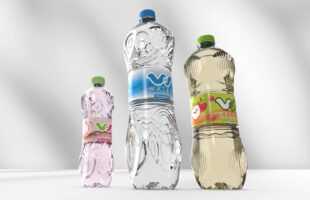
Erik Mclean/Pexels
In the U.S., aluminum beverage cans still rank first in terms of sustainability, according to the The Aluminum Can Advantage: Sustainability Key Performance Indicators 2021. This report, released by The Aluminum Association and Can Manufacturers Institute show that consumers recycle twice as more aluminum cans than its counterparts, like plastic (PET) bottles. The former comprises up to 20 times more recycled content than glass or PET bottles and are more valuable as scrap material. They’re worth about $991/ton, according to a two-year rolling average through February 2021.
While there was a decline in consumer recycling last year due to the COVID-19 pandemic, the number of used cans that were recycled actually increased to 46.7 billion cans. The industry recycling rate is at 59.7%, up from 55.9% in 2019, while the products recycled content is at 73%.
Closed-loop circularity rate is a new KPI added to the report, which measures how much of a recycled material goes back to the manufacturing or supply chain. For aluminum cans, it’s at 92.6%, which is a considerable rate compared to PET bottles at 26.8% and 30 to 60% for glass bottles.
“Aluminum cans remain the most recycled and recyclable beverage container on the market today,” said Raphael Thevenin, vice president of sales and marketing at Constellium and chair of the Aluminum Association’s Can Sheet Producers Committee. “But the U.S. recycling rate for cans lags behind the rest of the world – a needless drag on the environment and the economy. These new U.S. recycling rate targets will catalyze action within and outside the industry to bring more cans back into the recycling stream.”
“CMI is proud that the aluminum beverage can continues to outperform its competitors on key sustainability metrics,” said Robert Budway, president of CMI. “CMI beverage can manufacturer and aluminum can sheet supplier members are committed to build on the beverage can’s superior sustainability performance and have demonstrated that commitment with the industry’s new recycling rate targets. Achieving these targets are not only important to the industry’s growth, but also will benefit the environment and the economy.”
This report comes on the heels of The Aluminum Association’s recently announced campaign to increase aluminum can recycling rates. They are targeting a growth up to 70% by 2040 and 90% by 2050.
Recycling a single can saves 98.7 grams of carbon dioxide emission or 1.56 megajoules of energy. Further, if all aluminum beverage cans that go to U.S. landfills are recycled, the U.S. stands to save as much as $800 million in a year.








